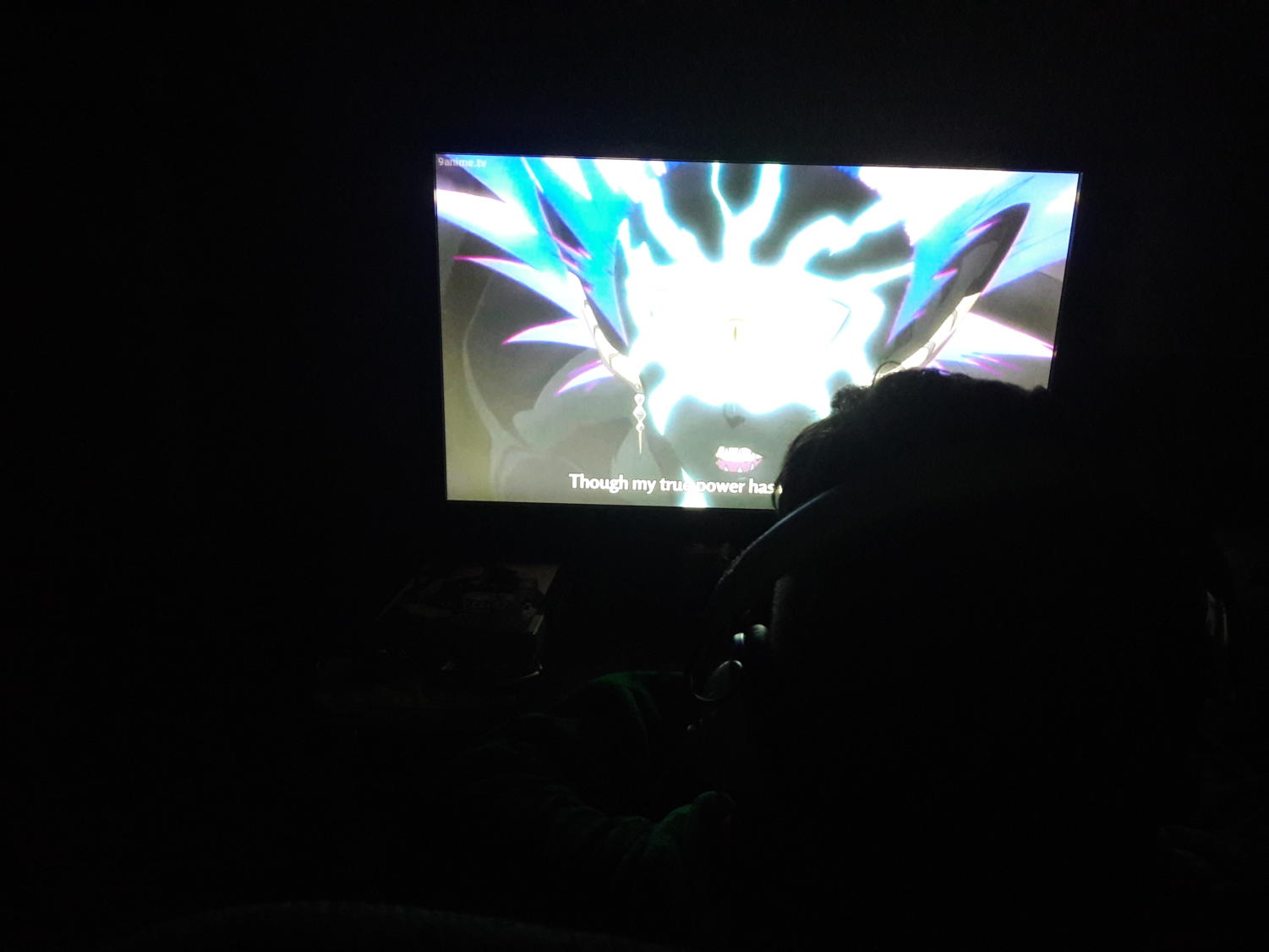Anime & manga: What’s your opinion?
November 2, 2017
A teen sits in their room with the lights off; the only light in the room comes from the computer screen. On the screen, there are animated characters wearing uniforms with wings fighting gigantic beasts, and at the bottom, there are sentences in English. The teen just stares at their screen, eyes lighting up with joy at the anime playing on their computer.
On the teen’s head, there are a pair of headphones covering their ears. If anyone listened to the audio playing through the headphones, had there not been subtitles, only a Japanese speaker would understand.
In another house on the other side of the world, a person is reading a graphic novel that has different frames, one containing a teen sitting at his desk writing in a notebook with names and faces popping up on the computer screen. Next to the teen is a strange creature eating an apple. This book is read in the traditional Japanese way of right to left and up and down.
People of different ethnicities, races, and beliefs all around the world read manga and watch anime. Anime is something artistic that can help people learn about the Japanese culture, and it is a form of entertainment. Mangas are graphic novels that are the written equivalent of anime. Most anime are originally mangas before becoming animated by Japanese animation companies.
The art teacher of the New York City iSchool, Ms. Smith, believes that anime is great. “I’m not an expert on it, but I like that the stories are very dramatic and I like that all of the characters have quirky hairstyles and interesting fashion,” she stated.
Although lots of effort is put into creating anime series, some people refuse to view it as a form of art. However, Ms. Smith opposes that claim. “I think that it’s definitely an art form,” she continued, saying that “things can be both arts and entertainment. They’re telling stories through animation and making them powerful.”
Many people tend to have certain stereotypes about anime, but Ms. Smith wants to send a message to those people and encourage them to give it a try. Some people believe that anime only caters to children or immature audiences and that all anime series are strange and unusual.
“I think it’s mostly for older people, due to the themes that most anime focus on.” Ms. Smith stated that “there are many different genres,” meaning that there is something out there for everyone. The anime series or the ones made for younger people tend to overshadow the other ones, causing a general misconception of what anime is and about the people who enjoy watching anime or reading manga.
Teachers aren’t the only ones who find the concept of anime and manga interesting. Maya Hing, a freshman at the NYC iSchool, believes that “anime is an artistic way of showing Japanese culture.”
Maya is half Japanese, and she finds enjoyment in watching anime. “It helps me keep up my Japanese and it’s funny,” Maya stated. She would like people to know that “there are a variety of anime,” and that some anime and manga “do show Japanese culture,” since it’s common for people to assume that anime and manga stray far from realistic themes and don’t portray the lifestyles of regular people.
In reality, not all anime and manga are like this, such as the slice-of-life ones. Slice-of-life is the genre based off of real life situations and story lines, like school life, or working adults’ lives. They also assist people who are interested in learning the Japanese language or curious about a completely different culture than theirs. Even if the story of an anime or manga is unrealistic, behaviors of characters, words used and many other features, such as the meals that characters eat or the school system in the series can give the reader or viewer insight on the Japanese culture.
Hervin Reyes, another freshman at the iSchool, has a different perspective on the topic considering the fact that he was not as familiar with the culture. He believes that “anime is an artistic way of showing off Japanese culture in an easy way for Americans to grasp.” Hervin stated anime caused him to become curious about Japanese lifestyles and he “researched the culture” to deepen his understanding on it, since anime had caused him to interpret it in different ways.
Mr. Singh, teacher of the Japanese Literature class, has studied the language and culture in college and wants people to view anime like they would view any other form of expression through the media. “You can’t just say you love all anime or you hate all anime, because it’s so diverse,” he stated. Mr. Singh goes on to describe anime and manga as “genres with options and availability to a wide audience,” due to the multitude of tones that they can potentially incorporate, as well as the aspect that they have fans that range greatly in terms of age.
Anime and manga are not only for entertainment purposes, but they are also educational as well as they can teach people about the Japanese culture since the anime or manga can portray a real life situation. There are many different anime that fit into many genres and are watched by people who like each particular genre, so people shouldn’t judge anime and manga just because it was produced by people of a different language. There are anime in many different languages just so that people can watch anime in a language that they prefer. People should at least give anime and manga a try before judging it.
